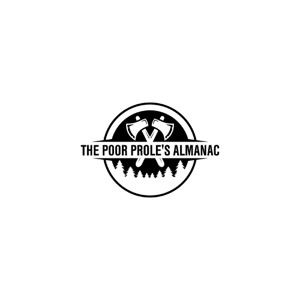Foodways and Climate Change in Ancient Ireland
The Poor Prole’s Almanac - Podcast tekijän mukaan The Poor Prole’s Alamanac, Bleav

Kategoriat:
This episode of "The Poor Proles Almanac" explores the dietary practices of prehistoric people in Ireland, highlighting the impact of climate change, ecological shifts, and the introduction of agriculture on their food sources and ways of life. The hosts, Andy and Elliott, take a deep dive into archeological evidence, examining plant and animal remains, pollen diagrams, and other indicators to reconstruct a picture of Ireland's evolving foodways over thousands of years. Navigating the Post-Glacial Landscape The episode begins by setting the stage for the arrival of humans in Ireland, tracing the retreat of glaciers and the emergence of a forested landscape dominated by species like juniper, birch, hazel, pine, elm, and oak. The hosts emphasize the role of human intervention in shaping the landscape even from these early stages. Introduction of New Species: Evidence suggests that early inhabitants, possibly from Britain, intentionally introduced animals like wild dogs, boar, and potentially even bears to the island, likely for subsistence, companionship, and symbolic purposes. This practice of "ecological engineering" reflects a deliberate effort to adapt the environment to their needs and preferences. Focus on Gathering and Woodland Management: The early inhabitants relied heavily on gathering plants for food, medicine, tools, and construction. This included a diverse array of seeds, fruits, roots, stems, and leaves. They likely engaged in practices like coppicing and controlled burning to manage the woodlands and enhance the abundance of desired species. The Arrival of Agriculture: A Time of Transition and Uncertainty The episode then explores the arrival of agriculture in Ireland, marking a significant shift in foodways and societal organization. However, the transition was not a smooth one, as climate change and other factors led to periods of experimentation and adaptation. The Elm Decline and Climate Instability: Around 6,000 years ago, Ireland experienced rapid climate change, resulting in a series of wetter and drier periods that significantly impacted the landscape. This period coincided with the "Elm Decline," a widespread decline in elm trees across Northwestern Europe, likely caused by a combination of disease, climate stress, and anthropogenic factors like land clearance for agriculture. Adoption and Rejection of Agriculture: Evidence suggests that early attempts at animal agriculture, particularly cattle farming, were initially adopted but later abandoned, possibly due to the changing environmental conditions. This period saw a resurgence in the use of wild food sources, indicating a flexibility in adapting to changing circumstances. The Arrival of Cereal Crops and New Dietary Staples: Despite the initial setbacks, cereal crops eventually became established in Ireland, with evidence of emmer wheat, barley, and other grains dating back to around 3,600 BC. These crops were likely introduced by farmers migrating from other parts of Europe. The adoption of agriculture led to the development of new technologies and practices, including pottery for storage, grinding stones for processing, and more permanent settlements. The Importance of Flexibility and Adaptation The hosts emphasize the dynamic nature of foodways in ancient Ireland, highlighting the ability of these communities to adjust their practices in response to environmental shifts, changing food availability, and new technologies. Shifting Preferences Based on Climate: The episode notes a shift from wheat to barley cultivation in later periods, likely driven by the barley's greater tolerance for cooler and wetter conditions. This change in crop preference, mirrored in other parts of Northwestern Europe like Scotland, demonstrates an understanding of matching crops to the prevailing climate. The Role of Wild Foods and Livestock: Despite the adoption of agriculture, wild foods continued to play a significant role in the diet, supplementing cultivated crops. The introduction of livestock, particularly cattle, further diversified food sources and provided manure for soil fertility. Managing Soil Acidity and Nutrient Depletion: The episode details various methods employed to manage soil acidity and nutrient depletion, common issues in Ireland's humid climate. These techniques included the use of animal manure, burning vegetation, incorporating shells and marl (lime-rich mud), and even burning animal bones to release phosphorus. The Legacy of Ancestral Knowledge and the Importance of Diversity The episode concludes by drawing connections between the adaptive strategies of ancient Ireland and the challenges we face today, particularly in the context of climate change. The hosts emphasize the value of ancestral knowledge and the importance of diversity in building resilient food systems. The Potential of Lost Knowledge: The episode raises questions about knowledge lost over time, speculating on the potential of ancient practices to inform modern approaches to soil management and food production. Learning from the Past to Inform the Future: The hosts argue that the adaptability and resilience demonstrated by ancient Irish communities offer valuable lessons for navigating an uncertain future marked by climate change and resource constraints. Embracing a Blend of Past and Present: They advocate for a blend of ancestral knowledge and modern scientific understanding to create more diverse, sustainable, and adaptable food systems capable of weathering future challenges. This episode also touches upon the role of population size in maintaining complex technologies and practices. The sources suggest that population declines may have led to a simplification of technologies and a reliance on more readily accessible resources. This observation raises important questions about the relationship between population density, technological innovation, and the long-term sustainability of complex systems. While the episode focuses primarily on foodways, it provides a fascinating glimpse into the lives and adaptations of ancient Irish communities, highlighting their resourcefulness, ingenuity, and deep connection to the land. For sources, transcripts, and to read more about this subject, visit: www.agroecologies.org To support this podcast, join our patreon for early, commercial-free episode access at https://www.patreon.com/poorprolesalmanac For PPA Restoration Content, visit: www.restorationagroecology.com For PPA Merch, visit: www.poorproles.com For PPA Native Plants, visit: www.nativenurseries.org To hear Tomorrow, Today, our sister podcast, visit: www.tomorrowtodaypodcast.org/

